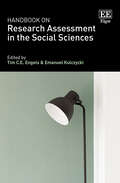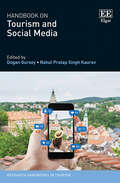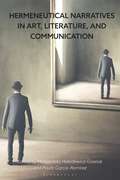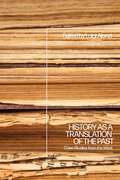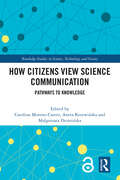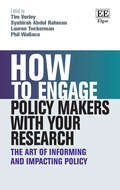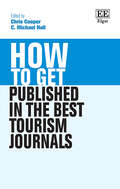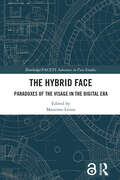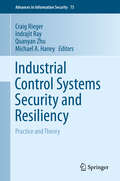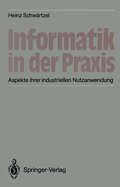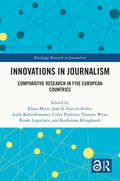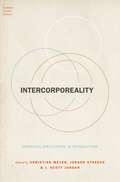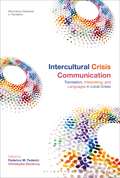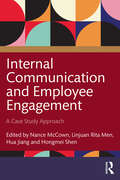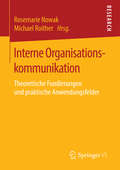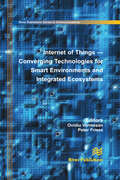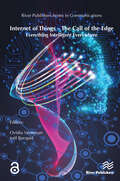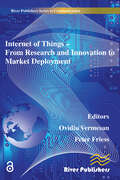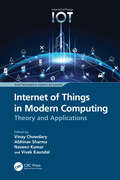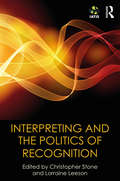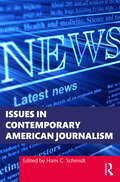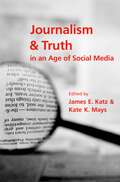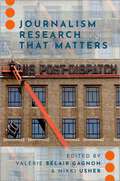- Table View
- List View
Handbook on Research Assessment in the Social Sciences
This Handbook provides a comprehensive overview of current developments, issues and good practices regarding assessment in social science research. It pays particular attention to the challenges in evaluation policies in the social sciences, as well as to the specificities of publishing in the area. The Handbook discusses the current societal challenges facing researchers, from digital societies, to climate change and sustainability, to trust in democratic societies. Chapters provide ways to strengthen research assessment in the social sciences for the better, by offering a diverse range of experiences and views of experts from all continents. The Handbook also outlines major data sources that can be used to assess social sciences research, as well as looking at key dimensions of research quality in the social sciences including journal peer review, the issue of identifying research quality, and gender disparities in social science research.This book will be an essential read for scholars interested in research assessment in the social sciences. It will also be useful to policy makers looking to understand the key position of the social sciences in science and society and provide appropriate frameworks for key societal challenges.
Handbook on Tourism and Social Media (Research Handbooks in Tourism series)
This comprehensive Handbook offers an overview of current research on the use of social media within the tourism industry, investigating a range of social media practices and proposing strategies to address key challenges faced by tourist destinations and operators. International contributors analyse both conceptual and practical social media topics, addressing cutting-edge social media issues in destination management and marketing. Drawing on empirical case studies and examples, chapters explore dark tourism, gastro-tourism, travel blogs, electronic word-of-mouth, sentiment analysis and a variety of quantitative and qualitative methodologies. The Handbook also defines central social media concepts and explores the impact they have on the success of tourist destinations, setting the stage for a better understanding of the relationship between social media and tourism. Through an examination of current trends in social media, as well as future trajectories, it provides critical insights for the successful development and implementation of social media marketing strategies. This Handbook will be a critical read for scholars and students of geography and business management, with a specific interest in tourism and hospitality management. Its practical considerations will also be beneficial for planners, policy makers, managers and marketers in the tourism industry.
Hermeneutical Narratives in Art, Literature, and Communication
Exploring the relationship between hermeneutics and the arts, including painting, music, and literature, this book builds on hermeneutics from a practical perspective, connecting this area of critical research with others to reveal how it is viewed from different perspectives. International and interdisciplinary in scope, this edited volume draws on the work of scholars and practitioners working across a variety of subject areas, themes and topics, including philosophy, literature, religious paintings, musical oeuvres, Chinese urbanscapes, Moroccan proverbs, and Ukrainian internet blogs. Focusing on the idea of hermeneutics as a discipline that can connect different areas of interest, the book offers an inside view into how the contributors 'interpret' it within their own academic remits, demonstrating its presence in qualitative academic interpretations and canonical contemporary research in humanities.
History as a Translation of the Past: Case Studies from the West
This volume considers how the act through which historians interpret the past can be understood as one of epistemological and cognitive translation. The book convincingly argues that words, images, and historical and archaeological remains can all be considered as objects deserving the same treatment on the part of historians, whose task consists exactly in translating their past meanings into present language. It goes on to examine the notion that this act of translation is also an act of synchronization which connects past, present, and future, disrupting and resetting time, as well as creating complex temporalities differing from any linear chronology. Using a broad, deep interpretation of translation, History as a Translation of the Past brings together an international cast of scholars working on different periods to show how their respective approaches can help us to better understand and translate the past in the future.
How Citizens View Science Communication: Pathways to Knowledge (Routledge Studies in Science, Technology and Society)
Science communication aims at the successful sharing and explanation of sciencerelated topics to a wider audience. In order to enhance communication between science and society, a better understanding of citizens’ habits and perceptions is needed. Therefore, it is vital to understand how citizens acquire knowledge about science- related issues, how this knowledge affects their beliefs, opinions and perceptions, and what sources of information they choose to learn about science – and how they assess their reliability. This book addresses these questions, based on the analyses of public consultations data from Italy, Poland, Portugal, Slovakia and Spain, concerned with the science communication of issues including climate change, vaccines, complementary and alternative medicine (CAM) and genetically modified organisms (GMOs). Sharing experiences of how to engage citizens in public consultation, it provides insights into the mobilisation of interest in science and offers recommendations on how to improve science communication.
How to Engage Policy Makers with Your Research: The Art of Informing and Impacting Policy (How To Guides)
Increasingly, academics are finding that engaging with external stakeholders can be both fruitful in undertaking research and an effective way to impact policy. With insightful and practical advice from a diverse range of contributors, including academics, policy makers, civil servants and knowledge exchange professionals, this accessible book explores How to Engage Policy Makers with Your Research.With a practical focus, this book combines an array of real-life experiences and insights from the perspectives of both academics and policy makers who are experienced in informing and impacting policy. The book comprehensively illustrates how academics can more effectively engage with policy makers through a range of interdisciplinary insights and case studies. The book explores the value of research for policy, as well as modes of engagement with policy for researchers across the various stages of their career.Providing practical insights to seize the opportunity of engaging policy makers in research, this innovative book will be an excellent resource for social science academics as well as policy makers looking to benefit from academic research insights. The book provides a better understanding of how the worlds of academics and policy makers can come together to realise greater policy impact from research expertise.
How to Get Published in the Best Tourism Journals (How To Guides)
Drawing on a wealth of knowledge and experience from leading tourism academics and journal editors, this practical How To guide offers clear-sighted advice on how to craft a high-quality paper in terms of contribution, positioning and submission. Accessible and comprehensive, it demystifies the process of getting published in the top tourism journals.This insightful book begins by mapping out the tourism publishing landscape, before delving into the various methods of building a refereed journal paper and navigating tourism publishers. Chapters dissect contemporary publishing issues, including gender inequality, ethics and integrity, and the dominance of English language publishing. Finally, contributors outline the essential role of publishing in shaping an academic career in tourism, especially in securing jobs, obtaining grant funding and creating pathways for career progression.How to Get Published in the Best Tourism Journals offers an insider perspective and practical advice while posing questions about the future of tourism publishing in the light of developments such as AI and Open Access. It will prove an essential resource to enhance journal publication success for tourism PhD students, as well as tourism academics at all career stages.
The Hybrid Face: Paradoxes of the Visage in the Digital Era (Routledge/FACETS Advances in Face Studies)
This original and interdisciplinary volume explores the contemporary semiotic dimensions of the face from both scientific and sociocultural perspectives, putting forward several traditions, aspects, and signs of the human utopia of creating a hybrid face. The book semiotically delves into the multifaceted realm of the digital face, exploring its biological and social functions, the concept of masks, the impact of COVID-19, AI systems, digital portraiture, symbolic faces in films, viral communication, alien depictions, personhood in video games, online intimacy, and digital memorials. The human face is increasingly living a life that is not only that of the biological body but also that of its digital avatar, spread through a myriad of new channels and transformable through filters, post-productions, digital cosmetics, all the way to the creation of deepfakes. The digital face expresses new and largely unknown meanings, which this book explores and analyzes through an interdisciplinary but systematic approach. The volume will interest researchers, scholars, and advanced students who are interested in digital humanities, communication studies, semiotics, visual studies, visual anthropology, cultural studies, and, broadly speaking, innovative approaches about the meaning of the face in present-day digital societies.
Industrial Control Systems Security and Resiliency: Practice and Theory (Advances in Information Security #75)
This book provides a comprehensive overview of the key concerns as well as research challenges in designing secure and resilient Industrial Control Systems (ICS). It will discuss today's state of the art security architectures and couple it with near and long term research needs that compare to the baseline. It will also establish all discussions to generic reference architecture for ICS that reflects and protects high consequence scenarios.Significant strides have been made in making industrial control systems secure. However, increasing connectivity of ICS systems with commodity IT devices and significant human interaction of ICS systems during its operation regularly introduces newer threats to these systems resulting in ICS security defenses always playing catch-up. There is an emerging consensus that it is very important for ICS missions to survive cyber-attacks as well as failures and continue to maintain a certain level and quality of service. Such resilient ICS design requires one to be proactive in understanding and reasoning about evolving threats to ICS components, their potential effects on the ICS mission’s survivability goals, and identify ways to design secure resilient ICS systems.This book targets primarily educators and researchers working in the area of ICS and Supervisory Control And Data Acquisition (SCADA) systems security and resiliency. Practitioners responsible for security deployment, management and governance in ICS and SCADA systems would also find this book useful. Graduate students will find this book to be a good starting point for research in this area and a reference source.
Informatik in der Praxis: Aspekte ihrer industriellen Nutzanwendung
Der Computer im modernen Sinn ist fast 25 Jahre alter als das Studienfach Informatik. Die industrielle Praxis ist der systematischen, wissenschaftlichen Durchdringung des Computers und seiner Anwendbarkeit zunachst deutlich vorangeeilt. Dabei hat der Computer eine entscheidende Wandlung durchgemacht: die ursprungliche "Rechenmaschine", die mit Zahlen umging, wandelte sich zum "Computer" als einer symbolverarbeitenden Maschine. Hierauf grundet sich die Universalitat seiner Anwendung, die uns heute so selbstver standlich erscheint. Damit schob sich zugleich die Software als ein technologisches, bestimmendes Element in den Vordergrund. Was anfangs eher als Erganzung der Hardware angesehen worden war, erweist sich zunehmend als der Kern der Informatik. Das gilt nicht nur fur die wissen schaftliche Seite, sondern gleichermaBen fur die industrielle Praxis. Ganz deutlich wird dies gegenwartig wieder bei der Zusammenfuhrung von Computern und Kommunikations technik. So ist dieses Buch uber die industrielle Anwendung von Informatik durch und durch ein Buch uber Software: ihre ganz unterschiedlichen Aufgaben, die sprode Eigenwilligkeit des Umgangs mit ihr, die neuartigen Methoden im Kontext von Wissensverarbeitung. Zugleich zeigt es die Anwendungsbreite von Informatik in einem GroBunternehmen -eine Breite, auf die die jungen Informatikabsolventen der Hochschulen heute vorbereitet sein sollten.
Innovations in Journalism: Comparative Research in Five European Countries (Routledge Research in Journalism)
This volume explores innovations in journalism: the goals and expectations associated with them, promoting and hindering framework conditions, and their social and industrial impact.Drawing on an international research project conducted in Germany, Austria, Switzerland, Spain, and the United Kingdom, the book takes a complex approach, considering media policy preconditions and the social impact of journalistic innovation from a comparative perspective. The key findings are examined and presented on different levels: theoretical, methodological, and – as the focus – empirical.Having identified the most relevant innovations in each of the five countries, a total of 100 case studies are examined to explore the influence of these innovations on the quality of journalism and its normative role in democratic societies and to analyze which preconditions support or inhibit the development and implementation of the innovations in news organizations. The interdependencies between journalistic innovations and their media policy preconditions are compared in a system-analytical way – concluding with the lessons that can be learned from the macrolevel (policies) and the mesolevel (organizations).This insightful and truly international volume will interest professionals, scholars and students of journalism, media and communication studies, media industry studies, and related fields.
Intelligent Wireless Sensor Networks and the Internet of Things: Algorithms, Methodologies, and Applications (Wireless Communications and Networking Technologies)
The edited book Intelligent Wireless Sensor Networks and Internet of Things: Algorithms, Methodologies and Applications is intended to discuss the progression of recent as well as future generation technologies for WSNs and IoTs applications through Artificial Intelligence (AI), Machine Learning (ML), and Deep Learning (DL). In general, computing time is obviously increased when the massive data is required from sensor nodes in WSN’s. the novel technologies such as 5G and 6G provides enough bandwidth for large data transmissions, however, unbalanced links faces the novel constraints on the geographical topology of the sensor networks. Above and beyond, data transmission congestion and data queue still happen in the WSNs.This book:·Addresses the complete functional framework workflow in WSN and IoT domains using AI, ML, and DL models.·Explores basic and high-level concepts of WSN security, and routing protocols, thus serving as a manual for those in the research field as the beginners to understand both basic and advanced aspects sensors, IoT with ML & DL applications in real-world related technology.·Based on the latest technologies such as 5G, 6G and covering the major challenges, issues, and advances of protocols, and applications in wireless system.·Explores intelligent route discovering, identification of research problems and its implications to the real world.·Explains concepts of IoT communication protocols, intelligent sensors, statistics and exploratory data analytics, computational intelligence, machine learning, and Deep learning algorithms for betterment of the smarter humanity.·Explores intelligent data processing, deep learning frameworks, and multi-agent systems in IoT-enabled WSN system.·This book demonstrates and discovers the objectives, goals, challenges, and related solutions in advanced AI, ML, and DL approaches.This book is for graduate students and academic researchers in the fields of electrical engineering, electronics and communication engineering, computer engineering, and information technology.
Intercorporeality: Emerging Socialities in Interaction (Foundations of Human Interaction)
This book draws inspiration from Maurice Merleau-Ponty's concept of intercorporeality to offer a new, multidisciplinary perspective on the body. By drawing attention to the body's ability to simultaneously sense and be sensed, Merleau-Ponty transcends the object-subject divide and describes how bodies are about, into, and within other bodies. Such inherent relationality constitutes the essence of intercorporeality, and the chapters in this book examine such relationality from a host of diverse perspectives. The book begins with an introductory chapter in which the editors review the current research on bodily interaction, and introduce the notion of intercorporeality as a potentially integrative framework. The first section then offers four chapters devoted to clarifying theoretical and developmental perspectives on intercorporeality. Section 2 contains three chapters that provide insight on intercorporeality from evolutionary, historical, and cross-sectional perspectives. In Section 3, four chapters examine the intercorporeal nature of meaning-making during human interaction. Section 4 then presents three chapters that explore the intercorporeal nature of multi-agent interactions and the role that non-animate bodies (i.e., objects) play in such interaction. Throughout all the chapters, the authors work to integrate research in their specific discipline into the larger, transdisciplinary notion of intercorporeality. This collection provides an indisputably unique perspective on bodies-in-interaction, while simultaneously offering an interdisciplinary way forward in contemporary scholarship on bodies, meaning, and interaction.
Intercultural Crisis Communication: Translation, Interpreting and Languages in Local Crises (Bloomsbury Advances in Translation)
Intercultural Crisis Communication poses pertinent questions and provides powerful responses to crises that have characterised the modern world since 2010. Language mediation in situations of disaster, emergency and conflict is an under-developed area of scholarship in Translation Studies. This book responds to a clear need for research drawn from practical experiences in the field and explores the crucial role of translation, interpretation and mediation in contexts of crises. Particular consideration is given to situations where rare or minority languages represent a substantial obstacle to humanitarian operations. Contemporary case studies from the USA, Africa, Europe, and Armenia provide major examples of crisis communication that call for more efficient language mediation. Such examples include Syrian displacement, the refugee crisis in Croatia and Italy, international terrorism and national public administration, interpreting in conflict and for Médecins sans Frontières, as well as the integration of refugee doctors for employment in the UK. With contributions from experts in the field, this volume is of international relevance and provides a multifaceted overview of intercultural communication issues and remedies during crises.
Internal Communication and Employee Engagement: A Case Study Approach
This book aims to explore the connection between internal communication and employee engagement in both educational and business settings. Through the collection of chapters contributed by leading public relations, communication, and management scholars as well as seasoned practitioners, readers will gain new insights into current issues in internal communication and employee engagement through a series of real-world case studies analyzing current issues and offering best practices in internal communication and employee engagement in specific industry and organization settings. Learning outcomes and discussion questions for both classroom use and business strategizing round out each chapter, providing a springboard to further inquiry, research, and initiative development in these intricately intertwined areas so crucial to employee satisfaction and organizational success. This makes Internal Communications and Employee Engagement an ideal resource for the intended audience of scholars, students, internal communication managers, and organizational leaders
International Business and Culture: Challenges in Cross-Cultural Marketing and Management (Routledge Studies in International Business and the World Economy)
International Business and Culture: Challenges in Cross-Cultural Marketing and Management explores the intricate relationship between culture and business, offering valuable insights for both practitioners and scholars. The authors delve into the profound impact of cultural dimensions on various aspects of international business, marketing, human resource management, and organisational structure. They examine the theoretical frameworks underpinning these studies through a meticulous narrative literature review and case studies.The significance of understanding cultural influences on business decisions becomes paramount in an increasingly interconnected world. The book addresses challenges faced by companies operating across diverse cultures, emphasising the need for adaptation in international marketing and management. Based on practical examples, the research focuses on identifying the most culturally sensitive areas in international business and explores the crucial cultural determinants influencing engagement with foreign markets.The book's theoretical background spans international business, marketing, and management, and it is intertwined with cultural concepts from Hofstede and Hall. It consists of 16 chapters covering marketing and communication strategies across cultures, cultural aspects of international business and cross-cultural management based on practical examples of Duracell, Inc., PepsiCo, Volkswagen, VELUX Group, and Amica Group, among others.The book highlights the undeniable interconnectedness of culture and business. As businesses expand internationally, the symbiotic relationship between culture and business remains a pivotal factor influencing success and growth.
Interne Organisationskommunikation: Theoretische Fundierungen und praktische Anwendungsfelder
Dieser Sammelband öffnet die Perspektive auf vielfältige Ausprägungen und Einsatzmöglichkeiten der internen Kommunikation, wie ihre Bedeutung unter AufsichtsrätInnen, innerhalb politischer Parteien, gesetzlicher Interessenvertretungen oder Großunternehmen. Die Beiträge umfassen die Themenfelder Berufsbild Interne KommunikationsmanagerIn, wissenschaftliche Verortung der internen Kommunikation, Kommunikation von gesetzlichen Interessenvertretungen, Storytelling, Narration, Mitarbeiterzeitung, Führungskräftekommunikation, Mitarbeitermotivation und Internal Branding. Das Buch bietet wissenschaftlich fundierte Erkenntnisse aus der Praxis sowie Querschnittwissen wie die 10 Erfolgsfaktoren der internen Kommunikation.
Internet of Things: Converging Technologies for Smart Environments and Integrated Ecosystems
The book aims to provide a broad overview of various topics of the Internet of Things (IoT) from the research and development priorities to enabling technologies, architecture, security, privacy, interoperability and industrial applications. It is intended to be a standalone book in a series that covers the Internet of Things activities of the IERC ? Internet of Things European Research Cluster from technology to international cooperation and the global state of play. The book builds on the ideas put forward by the European research Cluster on the Internet of Things Strategic Research Agenda and presents global views and state of the art results on the challenges facing the research, development and deployment of IoT at the global level.Today we see the integration of Industrial, Business and Consumer Internet which is bringing together the Internet of People, Internet of Things, Internet of Energy, Internet of Vehicles, Internet of Media, Services and Enterprises in forming the backbone of the digital economy, the digital society and the foundation for the future knowledge and innovation based economy in supporting solutions for the emerging challenges of public health, aging population, environmental protection and climate change, the conservation of energy and scarce materials, enhancements to safety and security and the continuation and growth of economic prosperity.Penetration of smartphones and advances in machine to machine and wireless communication technology will be the main drivers for IoT development. The IoT contribution is in the increased value of information created by the number of interconnections among things and the transformation of the processed information into knowledge shared into the Internet of Everything.
Internet of Things – The Call of the Edge: Everything Intelligent Everywhere
This book provides an overview of the Internet of Things (IoT) – covering new ideas, concepts, research and innovation to enable the development of IoT technologies in a global context. The work is intended as a standalone book in a series covering the activities of the Internet of Things European Research Cluster (IERC) – including research, technological innovation, validation, and deployment.The book chapters build on the developments and innovative ideas put forward by the IERC, the IoT European Large-Scale Pilots Programme and the IoT European Security and Privacy Projects – presenting new concepts, ideas and future IoT trends and ways of integrating open data frameworks and IoT marketplaces into larger deployment ecosystems.The IoT and Industrial Internet of Things technologies are moving towards hyperautomated solutions – combining hyperconnectivity, artificial intelligence (AI), distributed ledger technologies and virtual/augmented extended reality, with edge computing and deep edge processing becoming an assertive factor across industries for implementing intelligent distributed computing resources and data to keep the efficient data exchange and processing local to reduce latency, exploit the sensing/actuating capabilities and enable greater autonomy.Expanding the adoption of consumer, business, industrial and tactile IoT requires further development of hyperautomated IoT concepts for collaborative solutions involving machines and humans to expand augmented creativity at the application level using AI to optimise the industrial processes and progress towards a symbiotic economy based on distributed federated cloud/edge infrastructure allowing resource sharing in the form of computing, memory and analytics capabilities.The advances of autonomous IoT applications delivering services in real-time encompasses development in servitisation, robotisation, automation and hyperconnectivity, which are essential for the rapid evolution of industrial enterprises in the new digital era. The rise of digital twins integrated into IoT platforms as fully interactive elements embedded into the simulation and optimisation environment, as well as the embedment of AI techniques and methods, enhances the accuracy and performance of models in the various IoT and Industrial Internet of Things applications.The convergence of technologies to provide scalable, interoperable IoT-enabled applications pushed the requirements for high bandwidth, low latency and robust and dependable connectivity to support the industry’s demand for deeper integration and improved analytics to deliver sustainable competitive advantage products and services, enabling digital transformation with a focus on new business models.Safety and security are interlinked for the next wave of IoT technologies and applications and combined, prove a greater value for rapid adoption.The new IoT technologies are essential for facilitating sustainable development, reducing energy consumption and, by supporting the optimisation of products and processes, mitigating unnecessary carbon emissions – thereby reducing the environmental impact through real-time data collection, analysis, exchange, and processing.
Internet of Things Applications - From Research and Innovation to Market Deployment
The book aims to provide a broad overview of various topics of Internet of Things from the research, innovation and development priorities to enabling technologies, nanoelectronics, cyber physical systems, architecture, interoperability and industrial applications. It is intended to be a standalone book in a series that covers the Internet of Things activities of the IERC – Internet of Things European Research Cluster from technology to international cooperation and the global "state of play".The book builds on the ideas put forward by the European research Cluster on the Internet of Things Strategic Research Agenda and presents global views and state of the art results on the challenges facing the research, development and deployment of IoT at the global level. Internet of Things is creating a revolutionary new paradigm, with opportunities in every industry from Health Care, Pharmaceuticals, Food and Beverage, Agriculture, Computer, Electronics Telecommunications, Automotive, Aeronautics, Transportation Energy and Retail to apply the massive potential of the IoT to achieving real-world solutions. The beneficiaries will include as well semiconductor companies, device and product companies, infrastructure software companies, application software companies, consulting companies, telecommunication and cloud service providers. IoT will create new revenues annually for these stakeholders, and potentially create substantial market share shakeups due to increased technology competition. The IoT will fuel technology innovation by creating the means for machines to communicate many different types of information with one another while contributing in the increased value of information created by the number of interconnections among things and the transformation of the processed information into knowledge shared into the Internet of Everything. The success of IoT depends strongly on enabling technology development, market acceptance and standardization, which provides interoperability, compatibility, reliability, and effective operations on a global scale. The connected devices are part of ecosystems connecting people, processes, data, and things which are communicating in the cloud using the increased storage and computing power and pushing for standardization of communication and metadata. In this context security, privacy, safety, trust have to be address by the product manufacturers through the life cycle of their products from design to the support processes. The IoT developments address the whole IoT spectrum - from devices at the edge to cloud and datacentres on the backend and everything in between, through ecosystems are created by industry, research and application stakeholders that enable real-world use cases to accelerate the Internet of Things and establish open interoperability standards and common architectures for IoT solutions. Enabling technologies such as nanoelectronics, sensors/actuators, cyber-physical systems, intelligent device management, smart gateways, telematics, smart network infrastructure, cloud computing and software technologies will create new products, new services, new interfaces by creating smart environments and smart spaces with applications ranging from Smart Cities, smart transport, buildings, energy, grid, to smart health and life. Technical topics discussed in the book include: • Introduction• Internet of Things Strategic Research and Innovation Agenda• Internet of Things in the industrial context: Time for deployment.• Integration of heterogeneous smart objects, applications and services• Evolution from device to semantic and business interoperability• Software define and virtualization of network resources• Innovation through interoperability and standardisation when everything is connected anytime at anyplace• Dynamic context-aware scalable and trust-based IoT Security, Privacy framework• Federated Cloud service management and the Internet of Things• Internet of Things Applications
Internet of Things in Modern Computing: Theory and Applications (Smart Technologies for Engineers and Scientists)
The text focuses on the theory, design, and implementation of the Internet of Things (IoT), in a modern communication system. It will be useful to senior undergraduate, graduate students, and researchers in diverse fields domains including electrical engineering, electronics and communications engineering, computer engineering, and information technology. Features: Presents all the necessary information on the Internet of Things in modern computing Examines antenna integration challenges and constraints in the Internet of Things devices Discusses advanced Internet of Things networks and advanced controllers required for modern architecture Explores security and privacy challenges for the Internet of Things-based health care system Covers implementation of Internet of Things security protocols such as MQTT, Advanced Message Queuing Protocol, XMPP, and DSS The text addresses the issues and challenges in implementing communication and security protocols for IoT in modern computing. It further highlights the applications of IoT in diverse areas including remote health monitoring, remote monitoring of vehicle data and environmental characteristics, industry 4.0, 5G communications, and Next-gen IoT networks. The text presents case studies on IoT in modern digital computing. It will serve as an ideal reference text for senior undergraduate, graduate students, and academic researchers in diverse fields domains including electrical engineering, electronics and communications engineering, computer engineering, and information technology.
Interpreting and the Politics of Recognition: The IATIS Yearbook (The IATIS Yearbook)
Interpreting and the Politics of Recognition investigates the historical, ethical and professional dimensions of this, arguably, most widespread form of intercultural communication. Covering key topics from colonialism to representation, ethics and power, it looks at the different linguistic modalities (signed and spoken) used within communities to investigate equality of citizens. The contributors include leading authorities in their fields and use a wide spread of examples from a variety of disparate cultures – including deaf and ethnic minority groups. With eight chapters presented in three thematic sections and a foreword by Michael Cronin setting the book in its wider context, this volume will be of interest to practising interpreters, researchers and advanced students in the areas of Interpreting Studies, Translation Studies, and Linguistics and Communication Studies. Additional resources for Translation and Interpreting Studies are available on the Routledge Translation Studies Portal: http://cw.routledge.com/textbooks/translationstudies.
Issues in Contemporary American Journalism
Bringing together the diverse perspectives of over 20 leading journalism scholars, this collection provides an original insight into the history of American journalism and issues that exist and have existed within the industry for decades. The culture of journalism is in constant flux, with both individual journalists and the news industry as a whole regularly finding themselves at the center of controversy. While heightened in recent years, such controversy is not new and could in fact be considered a hallmark of the profession. With this in mind, this book presents original perspectives into issues and debates regarding the role of journalism in America, journalistic objectivity and ethics, diversity and representation, war and conflict reporting, local news, fake news, and hostility towards journalists. Each of the seven sections begins with a topical overview and ends with a short essay written by a leader in the field. Issues in Contemporary American Journalism is recommended reading for anyone studying the history and evolution of journalism in the US at an advanced level.
Journalism and Truth in an Age of Social Media
Truth qualities of journalism are under intense scrutiny in today's world. Journalistic scandals have eroded public confidence in mainstream media while pioneering news media compete to satisfy the public's appetite for news. Still worse is the specter of "fake news" that looms over media and political systems that underpin everything from social stability to global governance. This volume aims to illuminate the contentious media landscape to help journalism students, scholars, and professionals understand contemporary conditions and arm them to deal with a spectrum of new developments ranging from technology and politics to best practices. Fake news is among the greatest of these concerns, and can encompass everything from sarcastic or ironic humor to bot-generated, made-up stories. It can also include the pernicious transmission of selected, biased facts, the use of incomplete or misleadingly selective framing of stories, and photographs that editorially convey certain characteristics. This edited volume contextualizes the current "fake news problem." Yet it also offers a larger perspective on what seems to be uniquely modern, computer-driven problems. We must remember that we have lived with the problem of people having to identify, characterize, and communicate the truth about the world around them for millennia. Rather than identify a single culprit for disseminating misinformation, this volume examines how news is perceived and identified, how news is presented to the public, and how the public responds to news. It considers social media's effect on the craft of journalism, as well as the growing role of algorithms, big data, and automatic content-production regimes. As an edited collection, this volume gathers leading scholars in the fields of journalism and communication studies, philosophy, and the social sciences to address critical questions of how we should understand journalism's changing landscape as it relates to fundamental questions about the role of truth and information in society.
Journalism Research That Matters (Journalism and Political Communication Unbound)
It is now well-established that the long-time economic model on which the news industry has relied is no longer sustainable. Facebook, Google, and declining levels of popular trust in the media have been major contributors to this situation. Simultaneously, the closure of local media outlets across the country has left many areas without access to regional news, compounded the distance between media and publics, and further eroded civic engagement. Despite the looming crisis in journalism, a research-practice gap plagues the news industry. This book argues that an underappreciated factor in the news crisis is a potentially symbiotic relationship between journalism studies and the industry that it researches. As this book contends, scholars must think about their work in a public context, and journalists, too, need to listen to media scholars and take the research that they do seriously. Including contributions from journalists and academics, Journalism Research That Matters offers journalists a guide on what they need to know and journalism scholars a call to action for what kind of research they can do to best help the news industry reckon with disruption. The book looks at new research developments surrounding audience behavior, social networks, and journalism business models; the challenges that scholars face in making their research available to the public and to journalists; the financial survival of quality news and information; and blind spots in the way that researchers and journalists do their work, especially around race, diversity, and inequality. A final section includes contributions from journalists about how researchers can better engage on the ground with newsrooms and media professionals.
